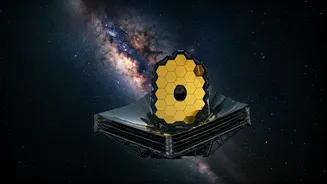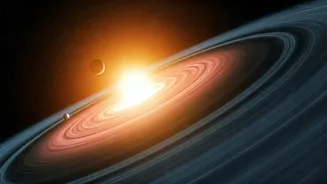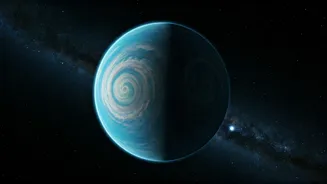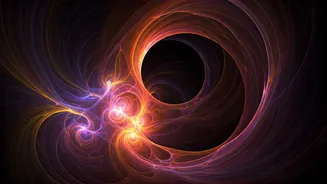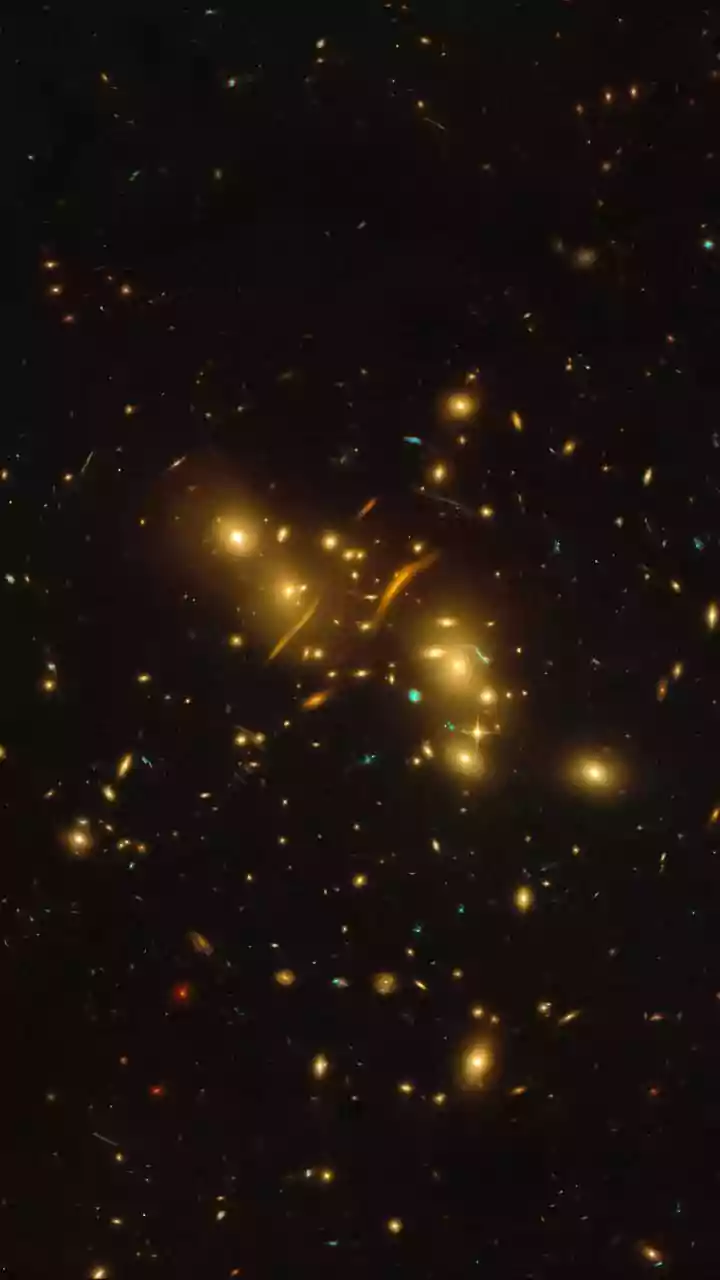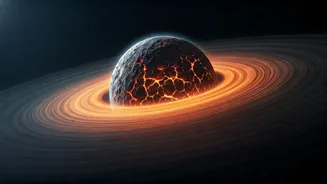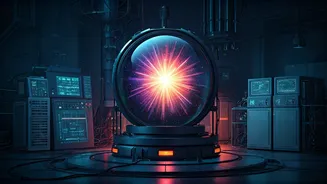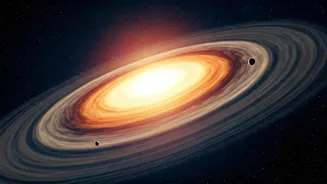Questioning Cosmic Pillars
For decades, scientists have relied on the concepts of dark matter and dark energy to explain the observed behavior of the universe. Dark matter, which
makes up about 85% of the total mass of the universe, is undetectable but its gravitational effects are evident. Dark energy, even more mysterious, is thought to be responsible for the accelerating expansion of the universe. However, a growing body of evidence, including observations from the James Webb Space Telescope, is challenging these well-established theories. Scientists are now re-evaluating the assumptions and models that underpin our understanding of the cosmos, leading to some unexpected conclusions and novel explorations.
Webb's New Perspectives
The James Webb Space Telescope (JWST) has emerged as a groundbreaking tool, providing unprecedented views of distant galaxies and celestial objects. The telescope's advanced capabilities allow astronomers to gather data with incredible precision. Its observations are now challenging the standard models of cosmology, forcing scientists to reconsider some of the fundamental assumptions about how the universe works. For example, JWST has provided more detailed insights into the formation of early galaxies, revealing inconsistencies with predictions based on dark matter models. These findings are pushing the boundaries of our current understanding and driving scientists to explore alternative explanations for the observed phenomena. JWST's contribution offers novel perspectives on the building blocks of the universe.
Alternative Cosmologies Explored
As the foundational concepts of dark matter and dark energy come under scrutiny, alternative cosmological models are gaining traction. One potential area of investigation involves modified Newtonian dynamics (MOND). MOND proposes that the laws of gravity work differently than we currently believe, particularly at low accelerations. In this case, there may be no need for dark matter to explain the observed rotation curves of galaxies. Another area explores the concept of 'modified gravity,' where scientists consider alterations to Einstein's theory of general relativity. These alternative models aim to explain the observed phenomena without relying on the existence of dark matter and dark energy. While still in their early stages, these alternative models are creating new avenues for research and challenging established dogma in cosmology, seeking to provide a new narrative.
Implications and Future Research
If dark matter and dark energy are not what we think they are, the implications for our understanding of the universe are vast. From the formation of galaxies to the overall expansion of the cosmos, many of our existing theories could need substantial revision. This research could reshape how scientists view the cosmic microwave background (CMB), which offers insights into the early universe. Furthermore, scientists are exploring alternative methods to measure the expansion rate of the universe, and are testing if previously understood concepts can be refined. This evolving landscape of scientific inquiry underscores the importance of continued observation and theoretical development. Future research will likely focus on gathering more data from the JWST and other advanced telescopes, refining current models, and developing new tests to differentiate between competing cosmological theories.
